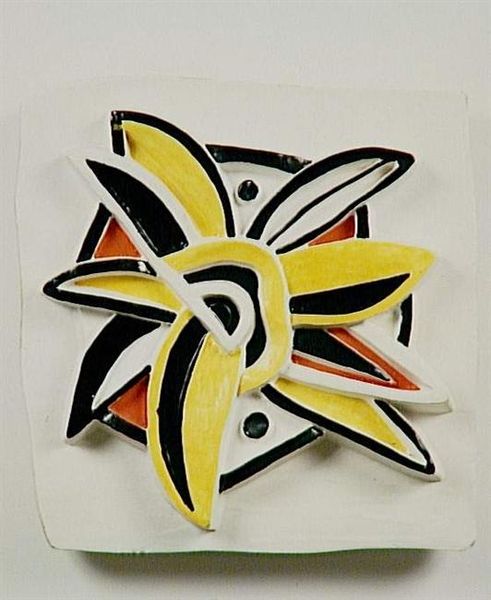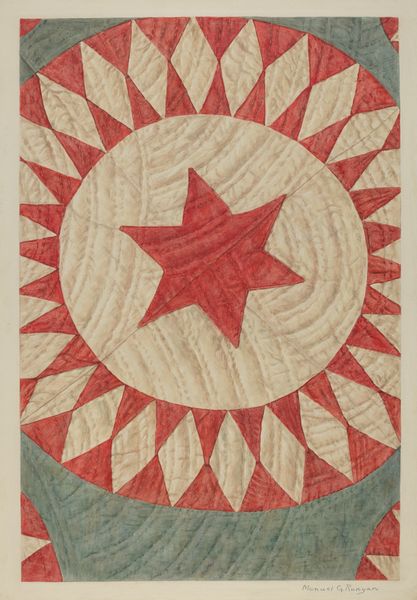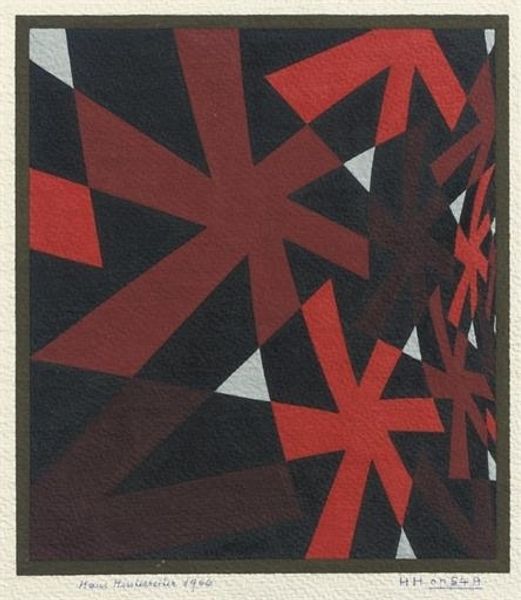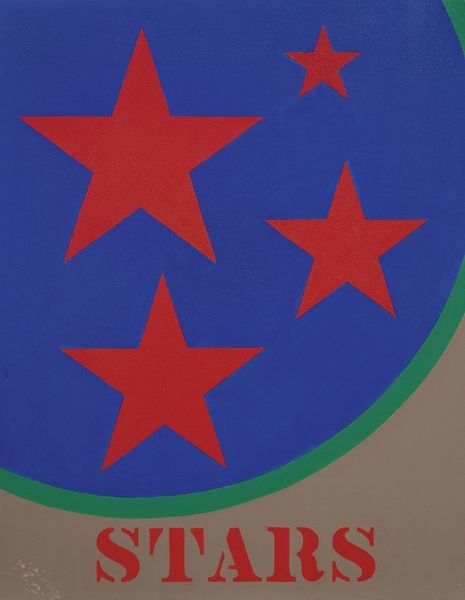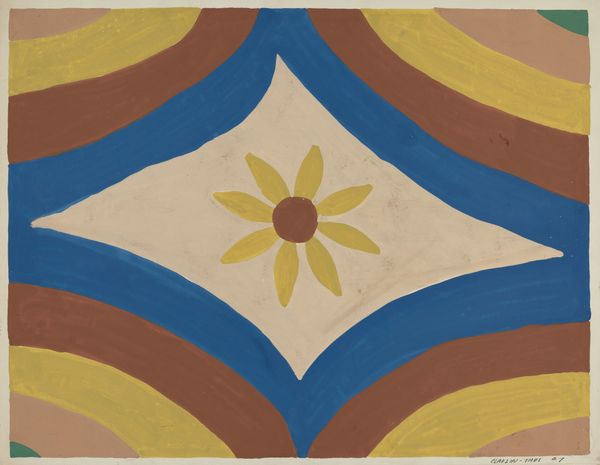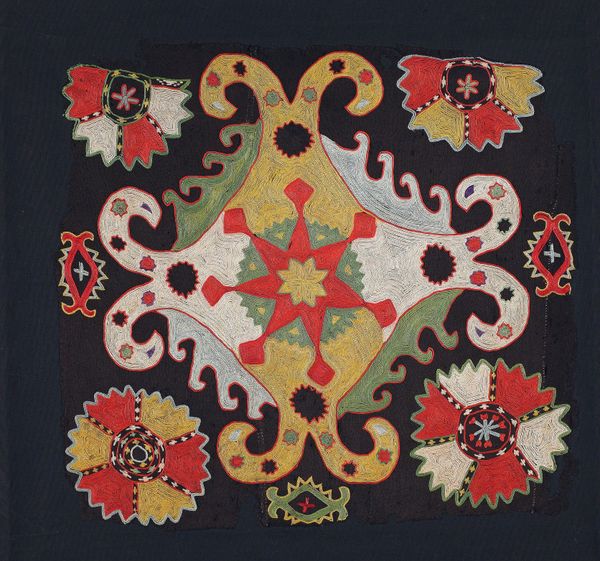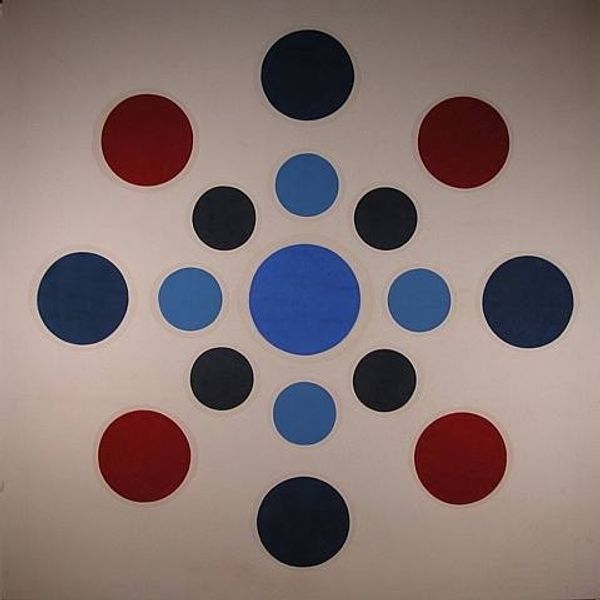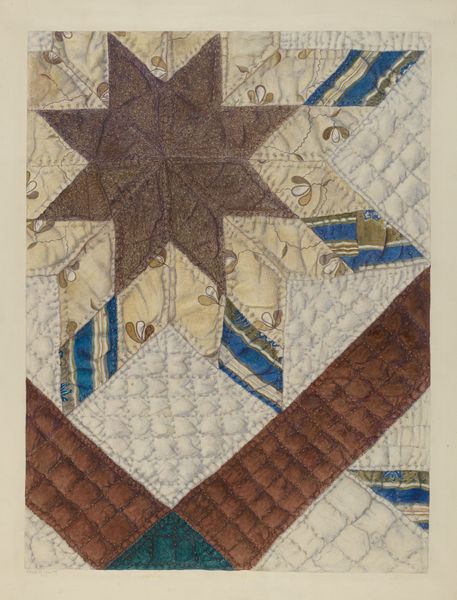
mixed-media
#
mixed-media
#
pop art
#
geometric
#
pop-art
#
hard-edge-painting
Dimensions: 194.9 x 212.7 cm
Copyright: Roy Lichtenstein,Fair Use
Curator: This mixed media piece by Roy Lichtenstein, titled "Wall Explosion II," was created in 1965. What's your initial reaction to this work? Editor: It hits you right away, doesn't it? This bold starburst shape with such vivid colors; the visual language definitely feels like an amplified comic book panel leaping off the page. Curator: Absolutely, Lichtenstein's background as a commercial artist greatly informed his exploration of mass media representation, and how this aesthetic permeated postwar America. How do you read the iconography here, particularly this idea of an explosion? Editor: Well, an explosion certainly grabs our attention. Beyond that immediate impact, its use during the Cold War connects it with themes of destruction and nuclear anxieties, mirroring the era's climate of conflict and fear. We might also view it as the big bang—or some act of cosmic creation—making reference to deeper patterns within universal symbolism. Curator: I agree, it's impossible to divorce this piece from the socio-political anxieties of its time. There’s a commentary on American aggression and our penchant for dramatizing conflict. What makes it all so fascinating is that he deploys it using an aesthetic rooted in popular, seemingly innocuous forms. Editor: Right, Lichtenstein wasn’t just mirroring contemporary visual culture, but distilling powerful themes using familiar signs. The sharp angles of this central 'explosion' draw clear associations with a star emblem too; that specific radial structure—along with the bright, graphic palette—evokes notions of strength or power which echo familiar visual messages found in various emblems and corporate symbols over time. Curator: That brings up some great points around the iconography embedded within consumerist society, doesn’t it? It is fascinating how he used seemingly commonplace cultural images, stripped of their original meaning, to explore deeper and broader questions. Editor: Exactly! The 'Wall Explosion II' serves as a forceful visual metaphor. What seems on the surface to simply reflect pop art values engages questions around memory, ideology, and America's shifting identity during moments when consumerism started blurring with militarism during that historical moment. Curator: Looking at it now, through today’s lens, it feels even more prescient as those concerns persist. Editor: I agree; reflecting upon how familiar cultural symbols get ingrained within societies remains timely across generations—as well as deeply human, wouldn’t you agree?
Comments
No comments
Be the first to comment and join the conversation on the ultimate creative platform.
